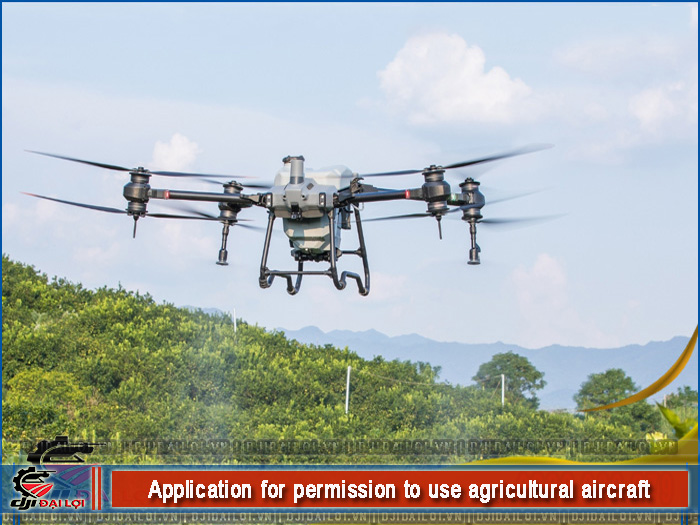
Many assume that spraying drones are merely agricultural tools, but in fact, their operation is governed by strict aviation laws similar to those for civilian aircraft. Operating without permission can lead to administrative fines of tens of millions of VND and pose risks to flight safety and the environment. Therefore, applying for permission to use crop-spraying drones is compulsory to ensure safety, legality, and regulatory compliance.
Anyone planning to use agricultural drones should complete the licensing process proactively to avoid penalties during random inspections or accidents.
The application dossier requires more than just a form; it includes several supporting documents, especially if the drone has long-range or wide-area capabilities. Proper preparation saves time and increases approval chances.
For modern agricultural drones like DJI Agras series, preparing accurate technical specifications is crucial, as the model, payload, and spraying system directly affect your permit review. Many applications are delayed because owners cannot provide complete documentation for imported DJI drones or fail to include the technical manual.
If the drone is imported, include customs declarations and certificates of origin. Prepare both hard copies and scanned files for faster processing if additional submissions are requested online.
Since the process involves coordination among agricultural, aviation, and defense authorities, follow these six steps to ensure approval without rejection or delay.
Specify your UAV’s model, control type, chemical capacity, and operating range. Define the spraying area clearly (commune, district, province, acreage, and schedule).
→ Avoid restricted areas near airports, radar stations, military bases, or defense factories.
Include 6–8 required documents:
→ Prepare scanned copies for online submission when needed.
This is the only authority authorized to issue flight permits. Submit in person, by post, or via the official online portal.
→ Do not send applications to the Department of Agriculture or People’s Committee, as they lack authority.
After submission, you’ll receive a reference number. Processing takes 10–15 working days. Officials may inspect your equipment and request supplementary documents.
→ Stay in contact with the assigned officer to avoid delays.
If approved, you’ll get an official document specifying validity period, authorized area, and conditions. This must be shown during inspections.
→ The document must bear the red seal of the General Staff and an official reference number. → Never copy another unit’s permit-this is a criminal offense.
Fly only within permitted zones and schedules. Assign a safety observer to monitor for chemical drift or unexpected risks.
→ Attach the permit number on the drone body for verification during field checks.
Even though the procedure is well-defined, many individuals and companies still make errors that lead to rejection or delays:
Tip: Double-check your 8-item checklist and contact the Operations Department beforehand for clarification.
→ Flying before receiving the official permit is considered illegal even if pending approval.
Even with a valid permit, violations can still occur. Follow these five practices to remain compliant:
Compliance during operation is as important as obtaining the license-it ensures legal safety and builds long-term credibility in agricultural drone services.
Yes. Even for personal use, crop-spraying drones are classified as controlled flying devices under the Ministry of National Defense.
Usually 10–15 working days for complete applications; longer if additional documents are needed.
Yes. Customs declarations or invoices must be included in the dossier.
Yes, if you specify each zone and flight schedule. However, separate applications per phase are easier to manage.
Submit a written request for re-issuance with loss confirmation. Do not operate until the replacement is issued.